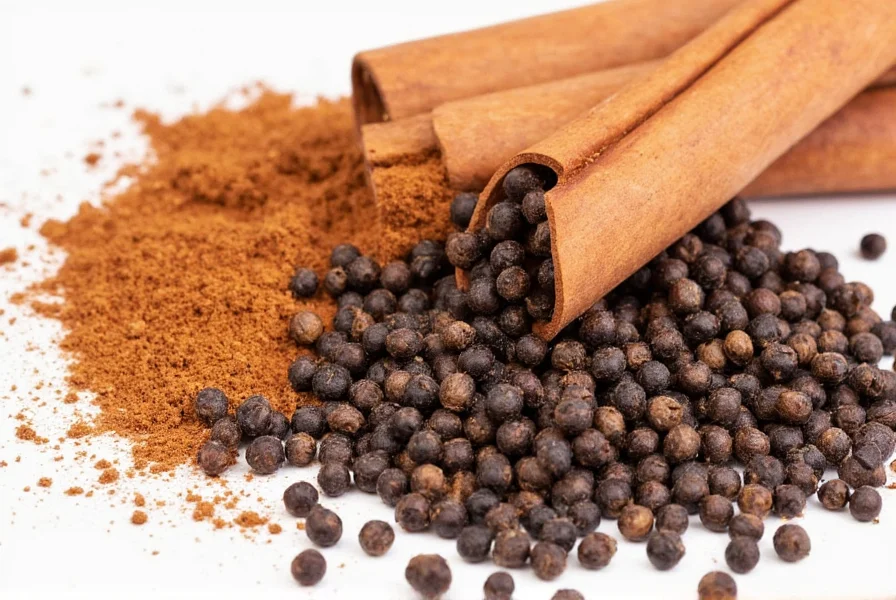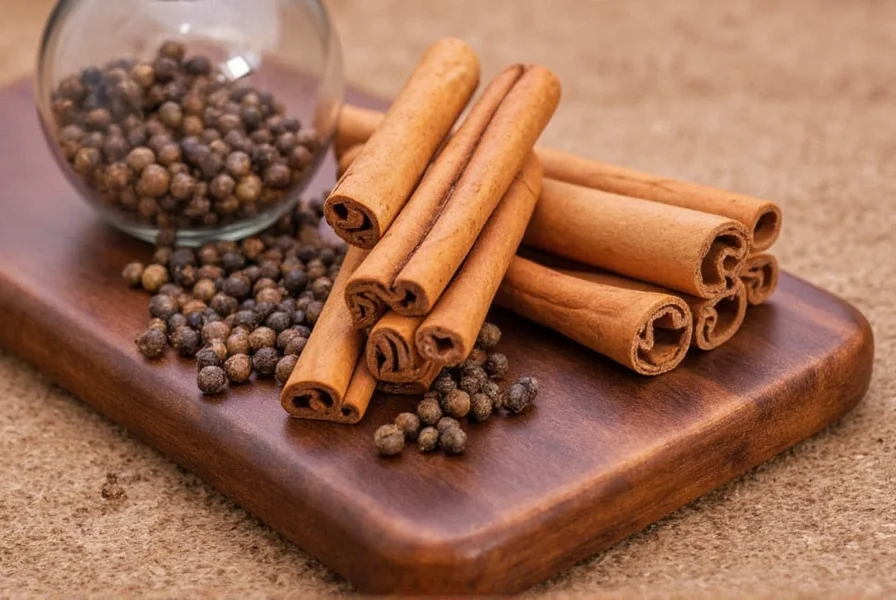Many health enthusiasts and traditional medicine practitioners recommend combining cinnamon with black pepper, but what does the science actually say? This comprehensive analysis examines the biochemical rationale, potential health benefits, and practical considerations for mixing these two common spices.
The Biochemical Basis for Combining Cinnamon and Black Pepper
Black pepper contains piperine, a bioactive compound that has been extensively studied for its ability to enhance the bioavailability of other substances. Research published in Planta Medica demonstrates that piperine inhibits certain enzymes in the liver and intestines that metabolize foreign compounds, potentially increasing the absorption of co-administered substances by up to 2000% in some cases.
While most research on piperine's bioenhancing effects focuses on curcumin (the active compound in turmeric), the same mechanism likely applies to cinnamaldehyde and other compounds in cinnamon. A 2019 review in the Journal of Ayurveda and Integrative Medicine noted that piperine's effects on drug metabolism pathways suggest potential applicability to various phytochemicals, including those found in cinnamon.

Potential Health Benefits of the Combination
The pairing of cinnamon and black pepper may offer several health advantages, particularly for metabolic health:
| Benefit Area | Scientific Evidence | Practical Application |
|---|---|---|
| Blood Sugar Regulation | Cinnamon shows modest effects on glucose metabolism; piperine may enhance absorption of active compounds | 1/2 tsp cinnamon + pinch of black pepper in morning tea |
| Anti-inflammatory Effects | Both spices have independent anti-inflammatory properties; potential synergistic effect | Add to savory dishes like roasted vegetables or soups |
| Antioxidant Capacity | Combined antioxidant activity may exceed individual effects | Use in spice blends for cooking or baking |
Safety Considerations and Potential Interactions
While generally recognized as safe when consumed in culinary amounts, this combination requires caution in certain situations:
- Medication interactions: Piperine may affect how the body processes certain medications including blood thinners, antidepressants, and diabetes medications
- Dosage concerns: Therapeutic doses beyond culinary use (typically more than 1 tsp cinnamon with significant black pepper) should be discussed with a healthcare provider
- Pregnancy considerations: High doses of cinnamon may stimulate uterine contractions; consult your obstetrician
- Digestive sensitivity: Some individuals experience gastrointestinal discomfort when consuming black pepper in larger amounts
A 2021 study in Food and Chemical Toxicology noted that while both spices are generally safe, concentrated forms or excessive consumption could potentially lead to adverse effects, particularly in sensitive populations.
Practical Ways to Combine Cinnamon and Black Pepper
For those interested in incorporating this spice pairing into their routine, consider these evidence-based approaches:
- Culinary applications: Add both spices to savory dishes like roasted vegetables, soups, or stews where their flavors complement each other naturally
- Beverage enhancement: Stir 1/4-1/2 tsp cinnamon with a pinch of freshly ground black pepper into warm almond milk or herbal tea
- Supplement consideration: Some specialized supplements combine these ingredients, but quality varies significantly between brands
- Topical use: Limited evidence suggests potential skin benefits when used in moderation in topical applications

Limitations of Current Research
It's crucial to acknowledge that while the biochemical rationale for combining cinnamon and black pepper is plausible, direct human studies on this specific pairing remain limited. Most evidence comes from:
- Studies on piperine's effects with other compounds (primarily curcumin)
- In vitro (test tube) studies examining biochemical interactions
- Animal research that may not directly translate to humans
- Traditional medicine practices lacking rigorous scientific validation
A comprehensive 2022 review in Nutrients concluded that while the theoretical basis exists for enhanced bioavailability of cinnamon compounds when combined with piperine, "dedicated clinical trials investigating this specific combination are notably absent from the current literature."
Conclusion: A Promising but Not Proven Combination
Mixing cinnamon with black pepper is generally safe when consumed in typical culinary amounts and may offer potential health benefits through enhanced bioavailability of active compounds. However, claims about dramatic health improvements from this specific pairing often exceed the current scientific evidence.
For those interested in exploring this combination, starting with small culinary amounts is recommended. Individuals with specific health conditions or those taking medications should consult with a healthcare provider before using this combination in therapeutic doses. As with any natural remedy, maintaining realistic expectations while acknowledging both potential benefits and limitations represents the most scientifically sound approach.










 浙公网安备
33010002000092号
浙公网安备
33010002000092号 浙B2-20120091-4
浙B2-20120091-4